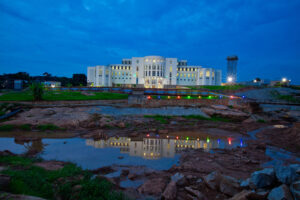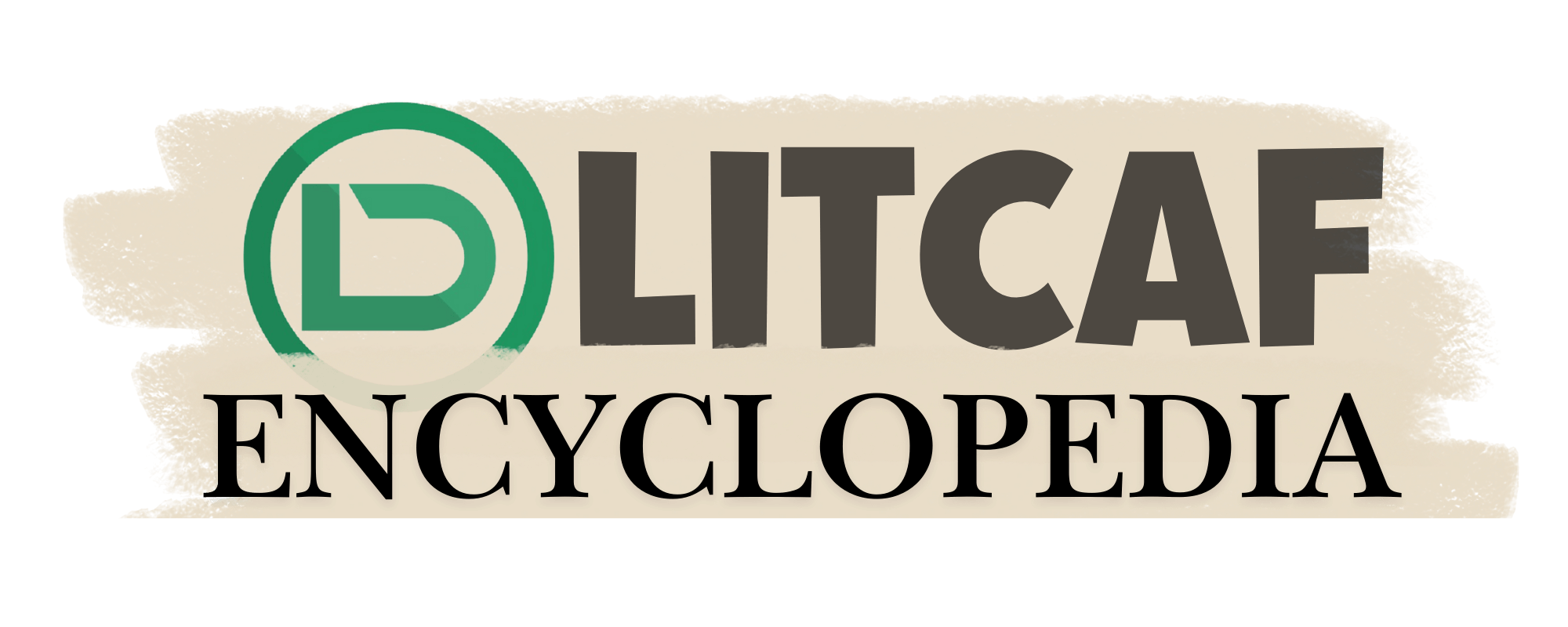
Olusegun Obasanjo Presidential Library; Conceived in 1988, the idea to set up the library remained just an idea until 10 years later when the man in whose honour the project is being put together was released from incarceration ostensibly for planning a coup against General Abacha. When President Obasanjo rode from prison to the State House as Nigeria’s second elected President, he established the Office of Presidential Libraries (Libraries Research and Documentation) whose mission was in part to see the OOPL idea translated into reality. The first of its kind in Africa, OOPL continues the distinguished tradition where a nation’s president bequeaths to posterity historical documentation of his life’s achievements. As in other parts of the world, the Olusegun Obasanjo Presidential Library provides an accommodation for the life’s work and memorabilia on the Obasanjo Presidential years as well as an ambience to carry out research work on him and other matters of interest.
The library is conceived as an integrated complex consisting of multifunctional facilities. It has at its focus the Presidential Library Centre, around which are built amusement, recreational and accommodation areas as well as other support facilities. It is designed to encourage patronage from, international! scholars, conference organizers, as well as attract global tourism. Beside boosting the socio-economic life in its immediate location, its presence represents a positive contribution towards Nigeria’s international image. Guiding Philosophy of the Olusegun Obasanjo Presidential Library is founded on three props: Leadership, Transparency and Agriculture. These three policy thrusts guided President Obasanjo throughout his years of public life and allowed him to lead, achieve and create a vivid, lasting legacy that continues to shape and influence; form and guide the times in which we live right now.
Location
OOPL is on the outskirt of Abeokuta town, near Ibara. It enjoys a strategic location as an important corner piece, where the main road from Abeokuta branches left into the highway to Ibadan and straight into the Sagamu-Lagos Expressway. The convergence of these three major highways at the site’s location gives it favourable prominence. This prominence is further enhanced by the location of some of the city’s major landmarks around it. These include the city’s stadium, the High Court, the State Secretariat and the main Golf Course. The site is eclectic in its make-up, consisting of elevated rocky highlands, astridea valley of forest with a stream flowing between them. It covers a very wide land mass. As a comer piece, its longest length is along State Secretariat Highway, while the shortest stretch is along Moshood Abiola Expressway. From a design point of view, the site is as interesting as it is challenging. It demands for a responsive architecture that will bring its full potentials to the fore. The site is divided into three major zones: the museum./’library, recreation and leisure and housing/sports facilities.
The library as the major object of the site is located on the high rocky zone. Here, it dominates its immediate urban landscape by making a dignified, architectural statement from atop the high rock. The site advertises the building to all passers-by by its prominence. This is more like the Parthenon of Greece or Abuja Stadium and less like the nearby Abeokuta Stadium, which is submerged into the valley. The structure does not only make a bold statement, but also becomes an urban reference point and a major city landmark. The design intends to make the passers-by ask: “What structure is that on the hill?” Its elevated location also provides an isolated tranquility, necessary for scholarship and museum appreciation. This also reduces the humidity to enhance objects’ preservation.
The recreation and leisure comprises guest houses, hostels, gifts/souvenir shops, amusement park and gardens, amphitheatre and auditorium. These facilities have been conceived to provide necessary support for the operation and maintenance of the complex. The guest houses and conference theatres accommodate research fellows, foreign students’ exchanges and conferences dealing with local and international issues and audiences. The housing and support services zone accommodates staff housing, utilities, power generation and other support facilities.
Structure
OOPL shall consist of a Library, an Archive and Museum, including a Policy Centre (for Research, Seminars and Workshops). In the tradition of American Presidential Libraries such as the Carter Centre, which is affiliated to Emory University, the Olusegun Obasanjo Presidential Library has secured affiliation with the Bells University of Technology. The relationship between OOPL and BELLSTECH is mutually beneficial in the areas of research, reference and documentation. Presidential Library Holdings; the most important historical materials in a Presidential Library are the presidential files and papers. These are records created by the President and his staff in the course of performing their official duties. All major issues of public policy are covered in these documents. Examples of Obasanjo Presidency are issues of Good Governance: leadership, national unity, social justice, human rights, transparency and accountability, conflict resolution, debt cancellation, food security and New Partnership for Africa’s Development (NEPAD) among others. The archive shall act as a repository for the presidential papers and historical materials of President Olusegun Obasanjo. Within this unit is a variety of public programmes designed to give visitors a better understanding of the President, the institution of the Presidency, and the Nigerian Political System[i].
Criticism
As the library was being developed there were public debates on if Obasanjo used his position as a sitting President to curry and solicit for monetary gift, benefits and donations from government contractors, federal parastatals, oil companies, politicians, government functionaries that cut across all tiers of government, privates individuals/sectors[ii]. Wole Soyinka, also a native of Abeokuta town in which the project was sited kicked against having the archives of Ulli Beier transferred to the library, that was paid for with the funds of Osun State[iii].
[i] Gateway Mirror, May 22, 2005
[ii] Premium Times, July 31, 2013
[iii] Premium Times, September 11, 2015
